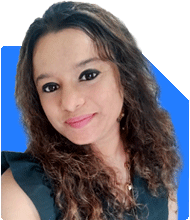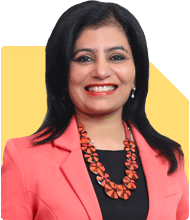How to Retire with 10-15 Crore at 23 with a 15-20 Lakh Salary?
Ramalingam Kalirajan |8365 Answers |Ask -Follow
Mutual Funds, Financial Planning Expert - Answered on Nov 01, 2024
He has an MBA in finance from the University of Madras and is a certified financial planner.
He is the director and chief financial planner at Holistic Investment, a Chennai-based firm that offers financial planning and wealth management advice.... more

I am 23, Currently unmarried , I earn around 15-20 lakhs a year. I want to retire with 10-15 crores. How do I do, where to start m ? I have knowledge on mutual funds but I doubt if their is any mutual fund which gives more than 20% return
1. Set Clear Financial Goals
Defining your goals is crucial. Your retirement corpus of Rs. 10-15 crores is a significant milestone. Identify any other goals, such as buying a car, traveling, or starting a family. Setting specific timelines and priorities helps in creating an effective investment roadmap.
2. Establish an Emergency Fund
An emergency fund is your first safety net. Aim for 6 to 12 months of your living expenses. Use a liquid or short-term debt fund for this purpose, keeping it accessible and safe. With this foundation, you can invest for growth confidently without dipping into your investments during emergencies.
3. Define Your Investment Strategy
Given your income, you can allocate a substantial portion to high-growth investments. Equities, especially equity mutual funds, are ideal for achieving long-term wealth. While mutual funds have historically delivered around 12-15% over the long term, a return of 20% is ambitious. High returns typically mean higher risks. Instead, aim for a balanced approach with realistic expectations.
4. Focus on Equity Mutual Funds
Equity mutual funds can be excellent for wealth accumulation, and SIPs (Systematic Investment Plans) are effective for building a disciplined habit. SIPs provide the benefit of rupee cost averaging, which helps manage volatility. Since you have a long investment horizon, choose diversified equity funds that suit your risk profile and time horizon. Actively managed funds often outperform in terms of returns over index funds. They offer a chance to generate above-average returns with professional expertise navigating market shifts.
5. Avoid Direct Mutual Funds
While direct mutual funds have lower expense ratios, they require in-depth research and tracking. With a regular fund, you benefit from an MFD’s support and a Certified Financial Planner’s guidance. This partnership helps you choose suitable funds, monitor performance, and rebalance your portfolio periodically. Regular funds are ideal for investors focused on maximising gains while managing risk with professional assistance.
6. Consider Sectoral and Thematic Funds Cautiously
While sectoral funds (focusing on sectors like IT, banking, etc.) and thematic funds can offer high returns, they also carry higher risk. Avoid concentrating too much in these funds unless you have high-risk tolerance and an understanding of market trends. Balance is key for a stable, long-term portfolio.
7. Explore Small-Cap and Mid-Cap Funds
Small-cap and mid-cap funds can yield high returns but come with high volatility. Allocating a small portion here may be suitable if you can tolerate risk. However, aim to keep a diversified portfolio with a mix of large-cap funds for stability, which helps balance growth and risk.
8. Tax-Efficient Planning
Knowing the tax implications on your investments is essential for optimising your gains. With equity mutual funds, long-term capital gains (LTCG) over Rs. 1.25 lakh are taxed at 12.5%. Short-term gains are taxed at 20%. For debt funds, LTCG and STCG are taxed based on your income tax slab. Understanding these rules allows you to plan withdrawals more effectively, maximising your post-tax returns.
9. Regularly Review and Rebalance Your Portfolio
Your portfolio should adapt as you progress in your career and as market conditions change. Reviewing your investments every 6-12 months with a Certified Financial Planner helps keep your portfolio aligned with your goals. Rebalancing ensures you’re on track, especially if some funds outperform or underperform. An active review is particularly important for equity-heavy portfolios where market volatility is high.
10. Embrace a Long-Term Mindset
Building Rs. 10-15 crore corpus will take time and patience. Equity investments require a minimum 7-10 years to show substantial returns. Avoid making frequent withdrawals, as compounding works best with consistent, long-term investments. Patience with market ups and downs and a disciplined approach can yield solid returns.
11. Supplement SIPs with Lump Sum Investments When Possible
Since you earn a good income, consider lump sum investments during market dips. This can amplify returns, allowing you to take advantage of market volatility. Keep funds for lump-sum investments in liquid funds until a good opportunity arises. Strategic lumpsum additions alongside SIPs can accelerate wealth creation over time.
12. Prioritise Pure Protection Insurance Plans
Term insurance provides pure life cover, ensuring financial protection for dependents without investment components. Avoid mixing investment with insurance, like in ULIPs. A straightforward term plan offers high cover at low premiums. Similarly, health insurance provides additional security. Starting early means lower premiums and comprehensive coverage.
13. Avoid Investment in Real Estate and Annuities
Real estate is typically illiquid, involving high costs and long holding periods. It may not align with your goal of liquid wealth accumulation. Annuities also don’t suit your goal, as they provide fixed returns with limited growth. Focus instead on liquid, growth-oriented investments like equity funds and fixed income options for short-term needs.
14. Track Progress Against Goals Periodically
Evaluating your progress is crucial to achieving your financial targets. Set benchmarks and compare portfolio growth periodically. Tracking helps identify areas for improvement, and a Certified Financial Planner can provide insights based on current market trends and conditions.
Finally
At your age, you have the advantage of time and compounding. By focusing on disciplined investing in equity mutual funds, balancing risk, and leveraging professional guidance, you can confidently work toward your goal of Rs. 10-15 crore retirement corpus. Avoid high-risk speculation and stay committed to a long-term approach.
Best Regards,
K. Ramalingam, MBA, CFP,
Chief Financial Planner,
www.holisticinvestment.in
https://www.youtube.com/@HolisticInvestment
You may like to see similar questions and answers below
Ramalingam Kalirajan |8365 Answers |Ask -Follow
Mutual Funds, Financial Planning Expert - Answered on Apr 29, 2024
Jinal Mehta | Answer |Ask -Follow
Financial Planner - Answered on Jun 17, 2024
Ramalingam Kalirajan |8365 Answers |Ask -Follow
Mutual Funds, Financial Planning Expert - Answered on Jun 19, 2024
Ramalingam Kalirajan |8365 Answers |Ask -Follow
Mutual Funds, Financial Planning Expert - Answered on Nov 01, 2024
Archana Deshpande |107 Answers |Ask -Follow
Image Coach, Soft Skills Trainer - Answered on May 14, 2025
Archana Deshpande |107 Answers |Ask -Follow
Image Coach, Soft Skills Trainer - Answered on May 14, 2025
Mayank Chandel |2276 Answers |Ask -Follow
IIT-JEE, NEET-UG, SAT, CLAT, CA, CS Exam Expert - Answered on May 14, 2025
Mayank Chandel |2276 Answers |Ask -Follow
IIT-JEE, NEET-UG, SAT, CLAT, CA, CS Exam Expert - Answered on May 14, 2025
Mayank Chandel |2276 Answers |Ask -Follow
IIT-JEE, NEET-UG, SAT, CLAT, CA, CS Exam Expert - Answered on May 14, 2025
Mayank Chandel |2276 Answers |Ask -Follow
IIT-JEE, NEET-UG, SAT, CLAT, CA, CS Exam Expert - Answered on May 14, 2025
Mayank Chandel |2276 Answers |Ask -Follow
IIT-JEE, NEET-UG, SAT, CLAT, CA, CS Exam Expert - Answered on May 14, 2025
Radheshyam Zanwar |1626 Answers |Ask -Follow
MHT-CET, IIT-JEE, NEET-UG Expert - Answered on May 14, 2025
Radheshyam Zanwar |1626 Answers |Ask -Follow
MHT-CET, IIT-JEE, NEET-UG Expert - Answered on May 14, 2025
Mayank Chandel |2276 Answers |Ask -Follow
IIT-JEE, NEET-UG, SAT, CLAT, CA, CS Exam Expert - Answered on May 14, 2025




















